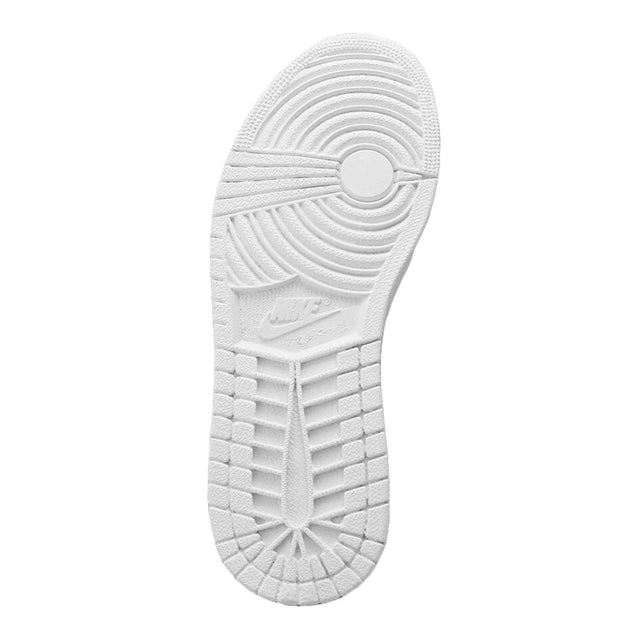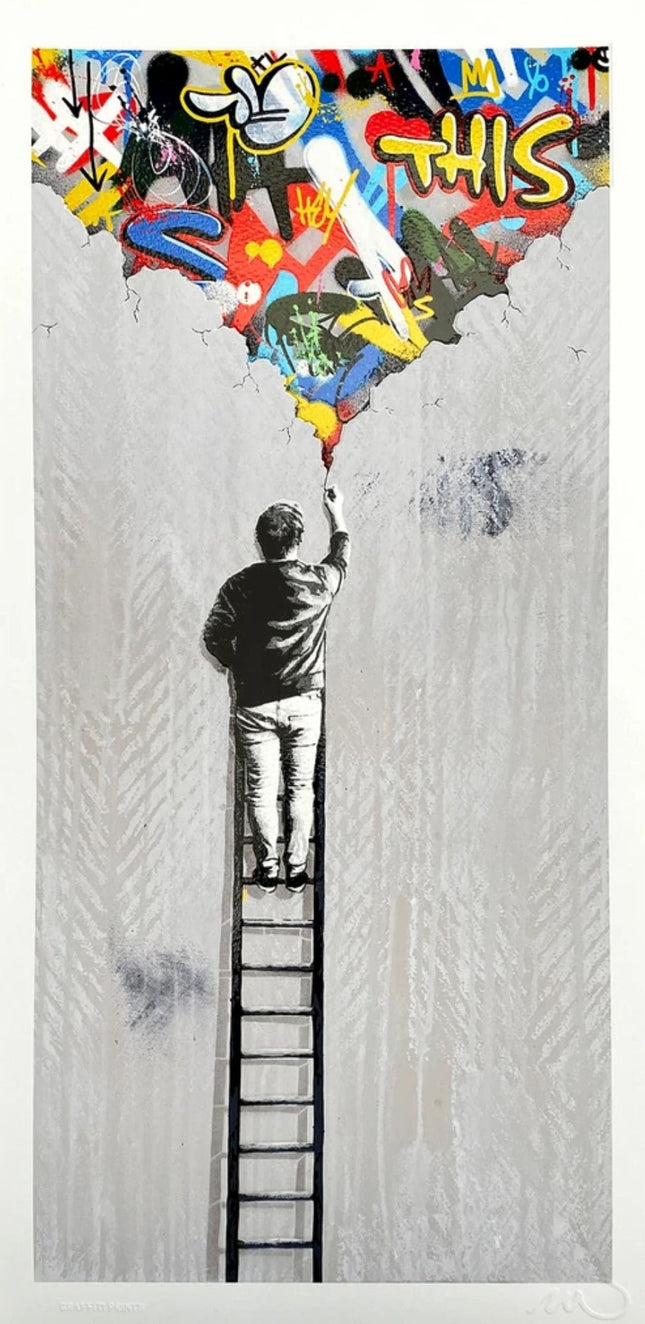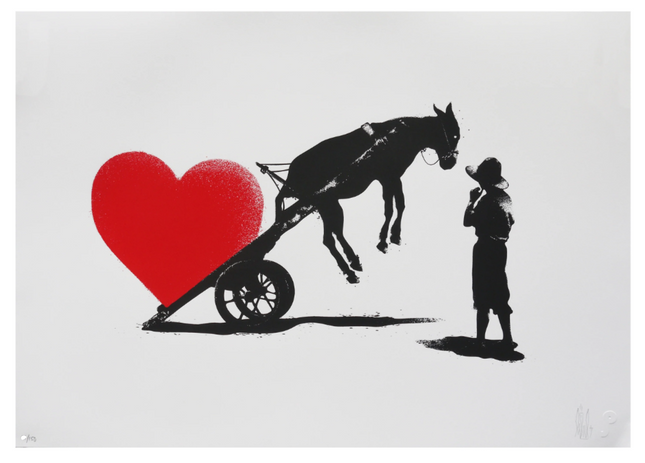
White

Martin Whatson The Crack Silkscreen Print by Martin Whatson
The Crack 7-Color Hand-Pulled Limited Edition Silkscreen Print on 300gsm Somerset Satin Paper by Martin Whatson, a Rare Street Famous Pop Artwork Artist. 2021 Embossed Stamp Limited Edition Artwork Size 9.84x19.68. Paper embossed around the crack for a 3D effect with the graffiti in the background. It was stamped by Martin Whatson & Graffitiprints. Technique and Design of "The Crack" "The Crack" is a compelling 7-color hand-pulled silkscreen print by the street pop art and graffiti artist Martin Whatson. Produced on 300gsm Somerset Satin paper, a preferred choice for high-quality prints due to its exceptional finish and weight, the 2021 limited edition piece measures 9.84 by 19.68 inches. This artwork emulates Whatson's style, which often showcases the contrast between black and white elements with splashes of colorful graffiti. Emphasizing the depth and texture, "The Crack" features paper embossed around the depicted crack, giving a 3D effect that brings the graffiti in the background to life. The embossing technique enhances the tactile experience of the artwork, inviting viewers to observe and feel the interplay between the two-dimensional and three-dimensional elements. Each print bears an embossed stamp of authenticity, further signifying it as a genuine work by Whatson. It is also stamped by Graffitiprints, marking it as a collaboration between the artist and the print house. Symbolism in Martin Watson's Work Whatson's "The Crack" can be seen as a metaphor for the unexpected beauty and complexity beneath the urban landscape's surface. The figure in print peels back a wall layer to reveal a vibrant world of color and life hidden underneath, symbolizing the artist's search for beauty in unexpected places. This visual metaphor is a recurring theme in Whatson's work, which often explores the relationship between the monochromatic, structured world and the chaotic vibrancy of street art. Contribution to Street Pop Art and Graffiti Martin Whatson has contributed significantly to the street pop art and graffiti movements by pushing the boundaries of traditional street art. His use of silkscreen printing, a technique with roots in pop art, bridges the gap between the studio and the street, allowing for the reproduction of his work while still maintaining a handcrafted feel. "The Crack" is a prime example of this blend, marrying meticulous stenciling with the unrestrained energy of graffiti. "The Crack" is a testament to Martin Whatson's innovative approach to street pop and graffiti artwork. It represents the artist's commitment to exploring and highlighting the contrast between the raw, expressive potential of graffiti and the controlled precision of stenciling, resulting in visually striking and conceptually profound pieces.
$490.00

Lee Eelus Beast of Burden Standard Silkscreen Print by Lee Eelus
Beast of Burden Standard Silkscreen Print by Lee Eelus Hand-Pulled 2-Color Screen Print on Deckled 300gsm Somerset Satin Paper Limited Edition Pop Street Art Artwork. 2017 Signed & Numbered Limited Edition of 150 Artwork Size 27.55x19.68 Lee Eelus is a contemporary British artist known for his thought-provoking and visually striking works, which often blend street art techniques with traditional fine art practices. His art often explores themes of duality and the human condition, and his distinctive style is characterized by bold colors and intricate stencil work. "Beast of Burden" is a standard silkscreen print created by Lee Eelus. Silkscreen printing is a technique in which an image is transferred onto a surface, such as paper or fabric, by forcing ink through a mesh screen. This process allows for the creation of vibrant and detailed prints, which can be replicated multiple times. In "Beast of Burden," Eelus portrays an animal, possibly a donkey or a mule, carrying a heavy load on its back. The piece is likely a commentary on the burden that humans place on animals, both physically and metaphorically, and it may also serve as a reflection on the weight that we all carry in our lives. The rich colors and intricate design of the piece make it a visually captivating work that is sure to spark conversation and reflection.
$422.00



